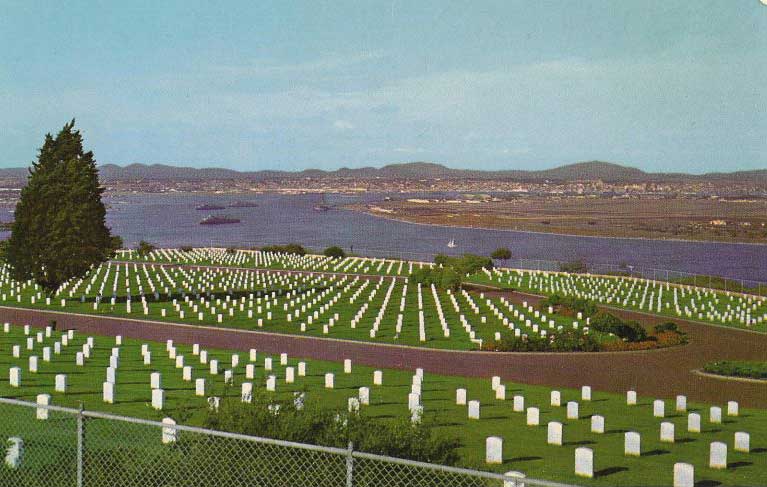
The origins of this hillside cemetery dates back to February 1852 when President Fillmore set aside the southern portion of Point Loma (about 1,400 acres) for military purposes. Subsequently, it was assigned to the U.S. Army and named Fort Rosecrans, after Civil War strategist Major General William Starke Rosecrans, a 1842 graduate of the U.S. Military Academy.
The (then) one acre cemetery was located on the crest of the point and first was used in the 1860s as a burial-ground for the San Diego Barracks –simply known as "Post Cemetery, San Diego Barracks (Point Loma)". When the fort was established a few years later, it became known as Fort Rosecrans Post Cemetery and was so designated until 1934 when it became Fort Rosecrans National Cemetery.
Originally about one acre in size, it now is over forty times that size. Today, Fort Rosecrans National Cemetery serves as the final resting place for thousands of veterans of the Armed Forces who answered the call of duty in the nation's service. Included among this number are 22 Medal of Honor recipients. Of the Medal recipients honored at Fort Rosecrans, three served in the Army, 12 in the Navy, and six in the Marine Corps. Medal recipients span military history itself –including the Indian Wars, the Spanish-American War, the U.S. intervention in the Mexican revolution in 1914-1915, the explosion of the USS Bennington in San Diego Harbor in 1905, World War I, World War II, the Korean War, and the Vietnam War.
Inside the stone wall of the original area lies the remains of the soldiers of the First Dragoons who were killed on December 6, 1846, at San Pasqual. A granite boulder from this battlefield bears a bronze plaque with the names of the soldiers who were killed there, while nearby are the graves of the two company commanders, Captain. Benjamin D. Moore and his brother-in-law, 2nd Lieutenant. Thomas C. Hammond, killed while leading the attack. Also located nearby is the grave of Albert B. Smith, who is credited with spiking the Mexican guns at the Old Town Presidio during that war and who nailed the American flag to the flagpole in the Plaza, while under fire by Mexican snipers.
Indian Campaigns
(1834 - 1909)
(1869 - 1941)
(1874 - 1959)
(1883 - 1959)
(1887 - 1943)
(1888 - 1978)
(1888 - 1954)
(1877 - 1955)
(1872 - 1952)
(1884 - 1954)
(1896 - 1961)
(1881 - 1952)
(1893 - 1986)
(1918 - 1941)
(1902 - 1945)
(1925 - 1998)
(1903 - 1977)
(1916 - 1950)
(1931 - 1967)
(1929 - 1993)
Gunnery Sergeant Howard was awarded the Medal of Honor for valiant leadership and courageous fighting spirit that served to inspire the men of his platoon to heroic endeavor in the face of overwhelming odds while fighting in Vietnam 16 June 1966. Birth: July 27, 1929; Death: November 12, 1993; Plot: Section O Grave 3759.